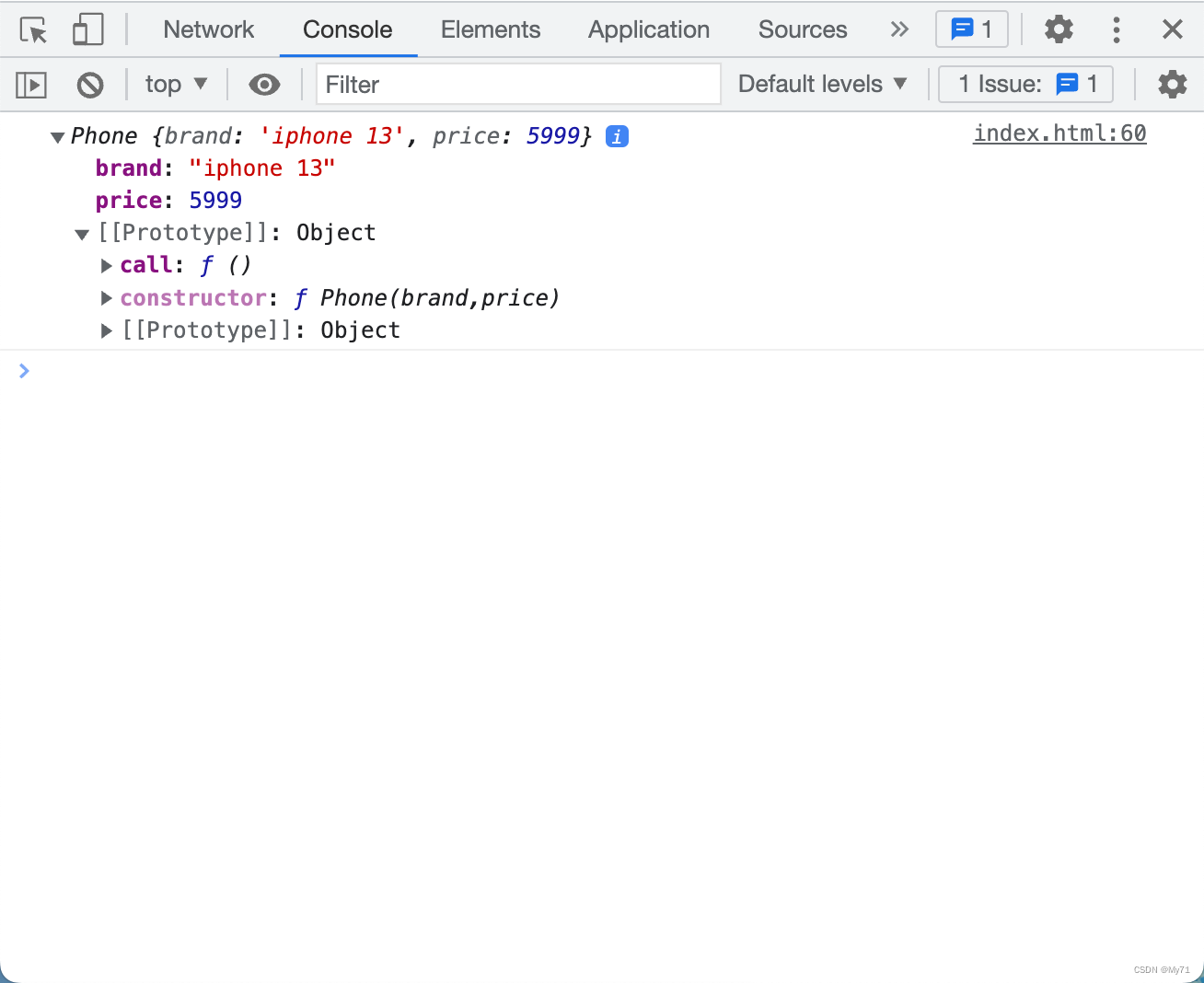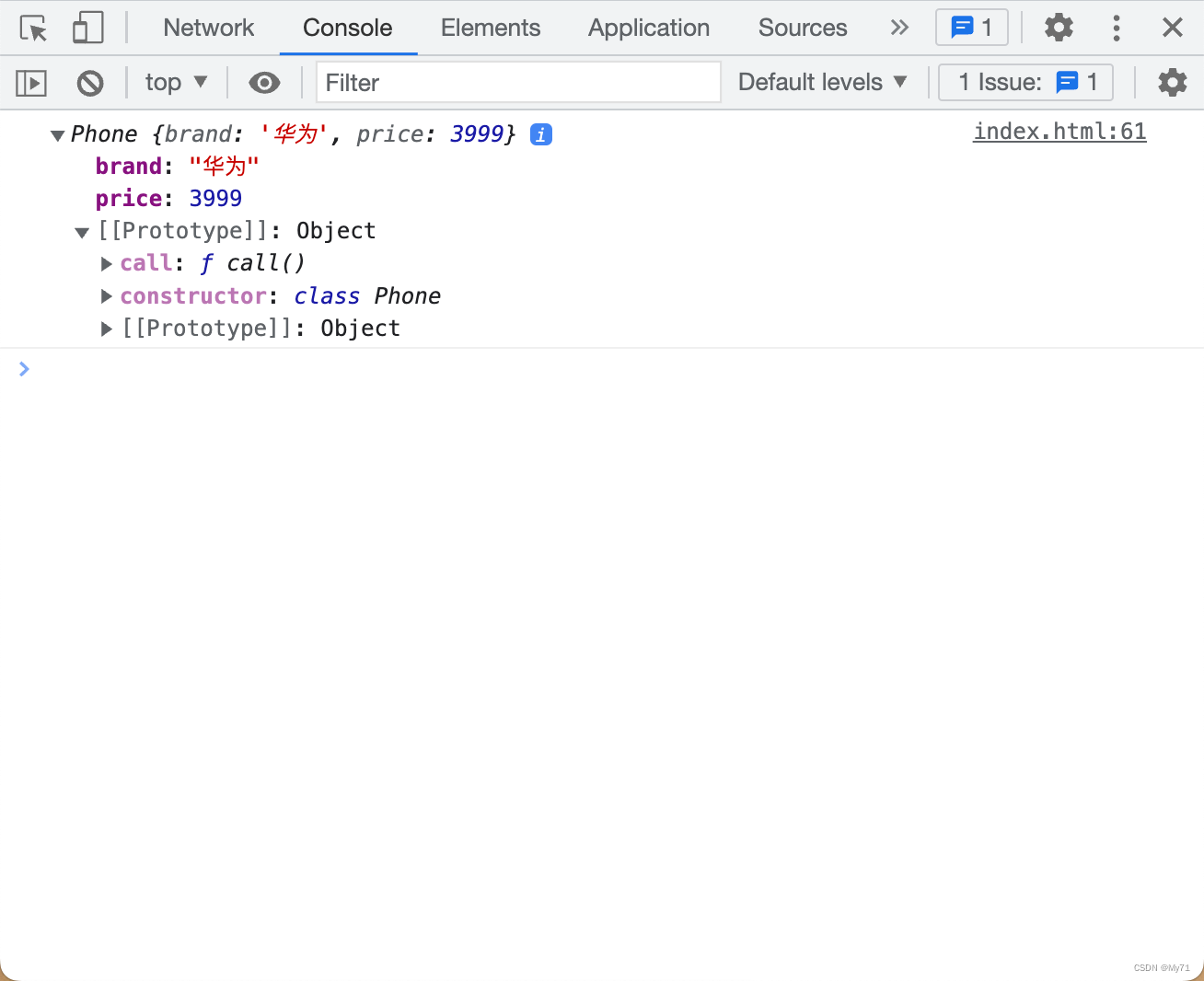ES5 创建对象
在 ES5 中可以通过构造函数去实例化对象。
代码
1
2
3
4
5
6
7
8
9
10
11
12
13
14// 构造函数
function Phone(brand,price){
this.brand = brand;
this.price = price;
}
// 添加方法
Phone.prototype.call = function(){
console.log('拨打电话');
}
// 实例化对象
let Iphone = new Phone('iphone 13',5999);
console.log(Iphone);
ES6 创建对象
通过 class 创建对象。
类中的构造方法的方法名必须是 constructor,构造方法会是 new 实例对象时调用。
1
2
3
4
5
6
7
8
9
10
11
12
13
14
15class Phone {
// 构造方法
constructor(brand,price){
this.brand = brand;
this.price = price;
};
// 普通方法
call(){
console.log('拨打电话');
}
}
let Huawei = new Phone('华为',3999);
console.log(Huawei);
静态成员
静态成员属于类,不属于单个对象。
定义静态成员的关键字:static
1
2
3
4
5
6
7
8
9
10class Phone {
static name = '手机';
static call(){
console.log('拨打电话');
}
}
let Huawei = new Phone();
console.log(Huawei.name);
console.log(Phone.name);
类的继承
关键字:extends
继承父类后,父类中的所有非静态成员子类对象均可使用。
在子类中可以通过 super 调用父类的成员。
在子类的构造方法中使用 super() 完成继承属性的初始化。
1
2
3
4
5
6
7
8
9
10
11
12
13
14
15
16
17
18
19
20
21
22
23
24
25
26
27class People {
constructor(name,age){
this.name = name;
this.age = age;
}
run(){
console.log('跑步');
}
static play(){
console.log('玩');
}
}
class Student extends People {
constructor(name,age,id){
super(name,age);
this.id = id;
}
speak(){
super.run();
console.log('我可以说话');
}
}
let stu = new Student('张三',21,20210010);
console.log(stu);
stu.speak();
方法重写
父类方法不满足子类需求时,子类可重写父类方法。
子类中可以定义一个和父类相同名称的方法,记为重写。
方法重写后,子类实例对象调用该方法时会执行子类中的代码,不会执行父类里的。
1
2
3
4
5
6
7
8
9
10
11
12
13
14
15
16
17
18
19
20
21
22class People {
constructor(name,age){
this.name = name;
this.age = age;
}
run(){
console.log('跑步: 5km');
}
}
class Student extends People {
constructor(name,age,id){
super(name,age);
this.id = id;
}
run(){
console.log('跑步: 10km');
}
}
let stu = new Student('张三',21,20210010);
stu.run();
get 和 set
在 class 中可以通过 get 拿到属性的值,通过 set 设置属性的值。
get 和 set 是对对象的一种保护。
1
2
3
4
5
6
7
8
9
10
11
12class Test {
get num(){
console.log('num 被调用');
return 10
}
set num(e){
console.log('num 被重新赋值');
}
}
let test = new Test();
console.log(test.num);
test.num = 10;


